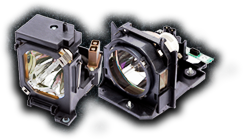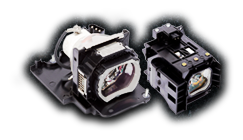There are a few types of projectors, but the main projectors used are the DLP (Digital Light Processing) and LED (Light Emitting Diode) projectors.
DLP projectors use a chip with thousands of mini-reflecting light mirrors to create an image. The projectors have higher brightness, a lifespan of 2,000-5,000 lamp hours, compact and portable.
Low maintenance for DLP projectors, replacing the lamp, and checking the manual for indicator lights for projector and lamp problems.
LED projectors use LED light sources, which are red, green, and blue LEDs, to create colors and richer and more natural hues. LED projectors use a DMD (Digital Micromirror Device) to process the image digitally. In projection, the light is directed via optics and lenses to make a sharp image on the screen.
LED Projector Factors
- Good color saturation, but their colors are less bright than DLP projectors.
- The brightness is lower, so it’s best used for dark rooms or personal use.
- The lifespan of LED projectors is longer: 20,000-30,000 hours. The projectors don’t have lamps.
- Produces less heat and requires low maintenance.
- Portability has small and lightweight projectors, which are good for mobile presentations and at-home viewing experiences.
- Richer colors in projection, but not as precise for professional color grading.
DLP Projector Benefits
- The lamps have high brightness, compatibility, and portability.
- Low maintenance means fewer phone calls, emails, and hassles.
- Sharp images with high contrast, which means crisp and detailed visuals.
- Great for gaming and fast-motion content to minimize motion blur.
LED Projector Negatives
- Lower brightness than DLP projectors.
- Limited color accuracy, which means LED projectors can’t reproduce every color in the color spectrum and leads to visual inconsistencies.
- LED projectors have pixelation issues or grainy appearances, which affect clarity.
In conclusion, DLP projectors are better in brightness, maintenance, sharper images, and are great for gaming.


